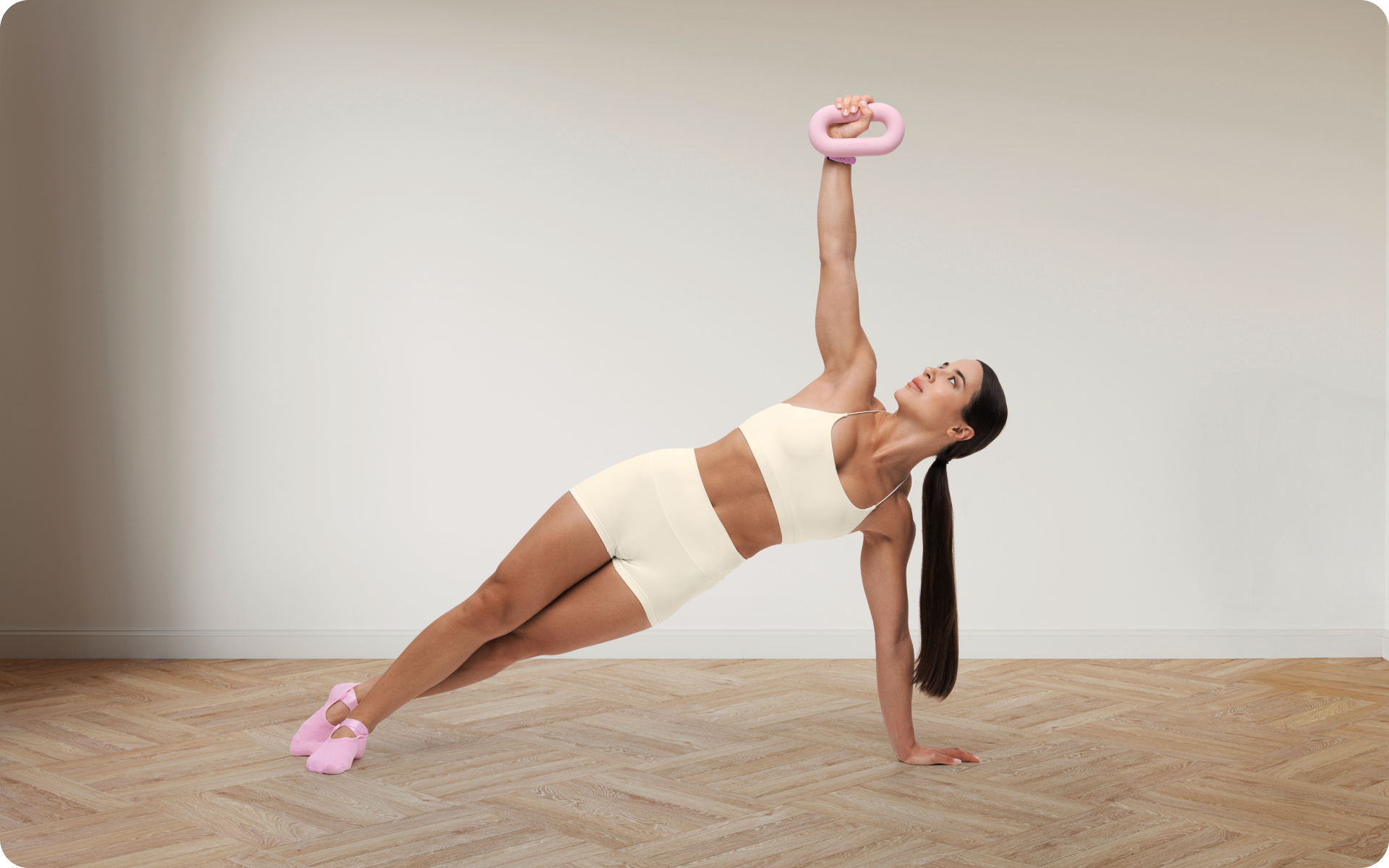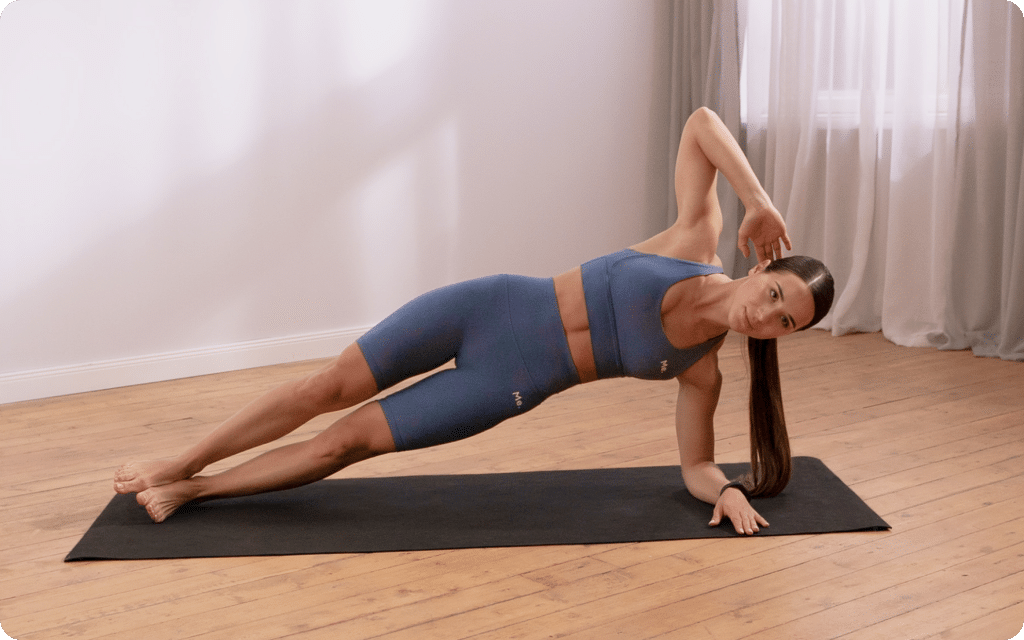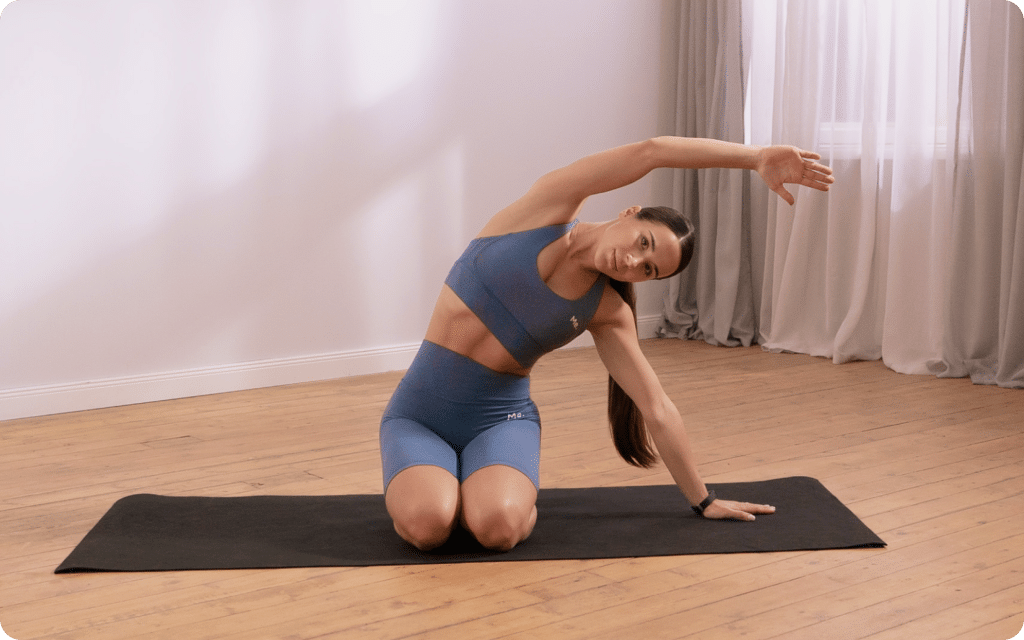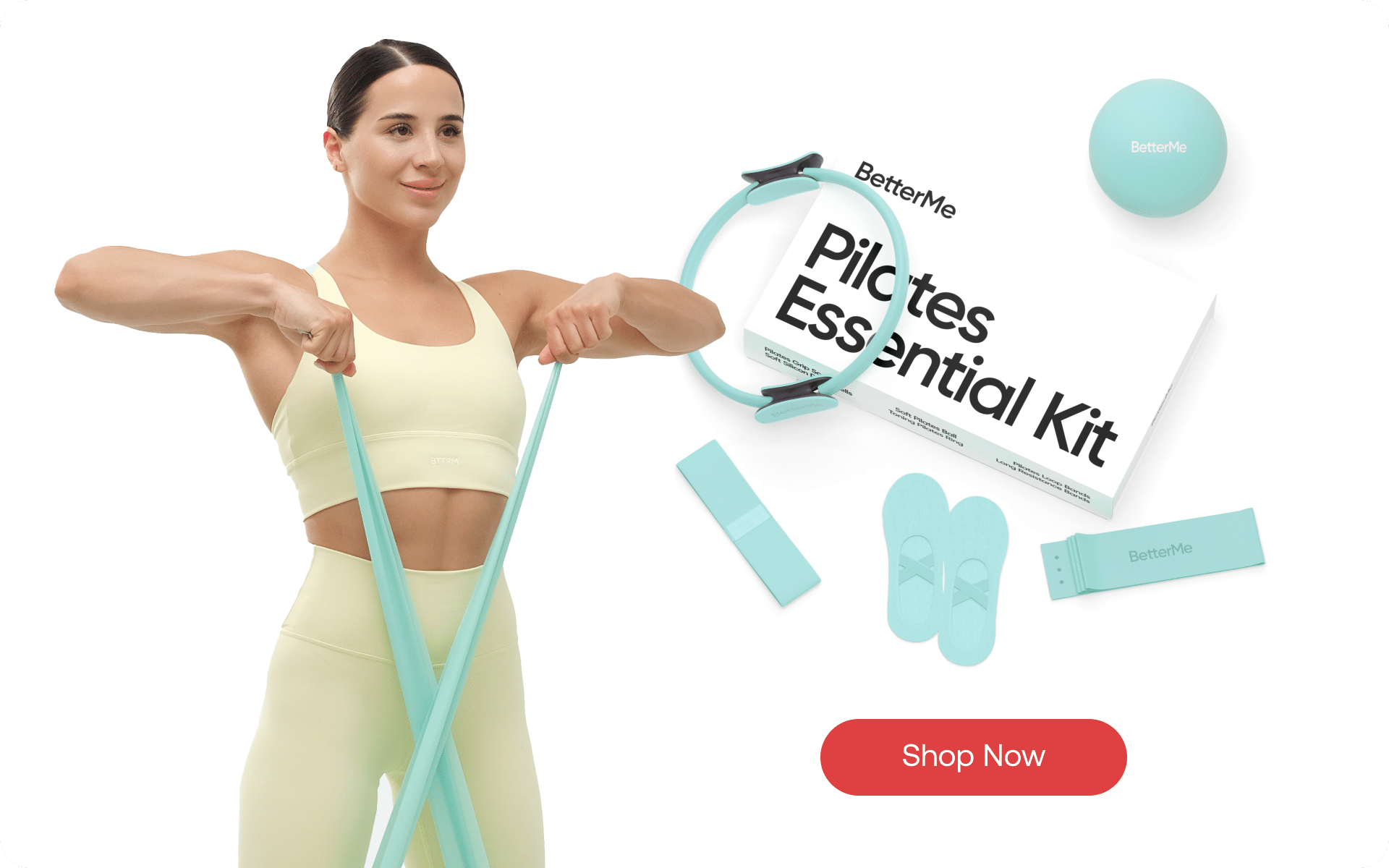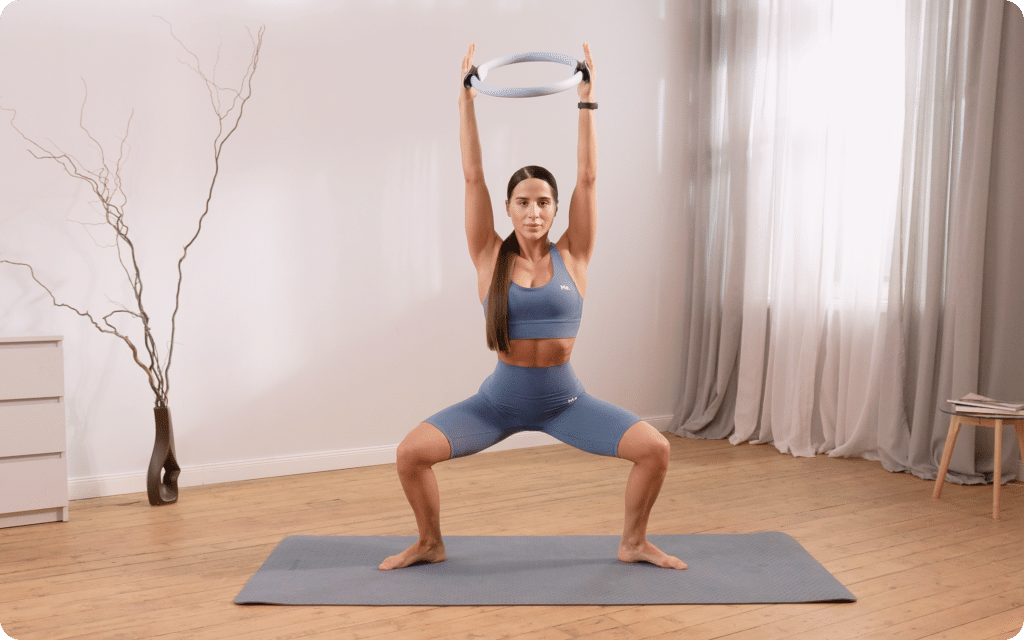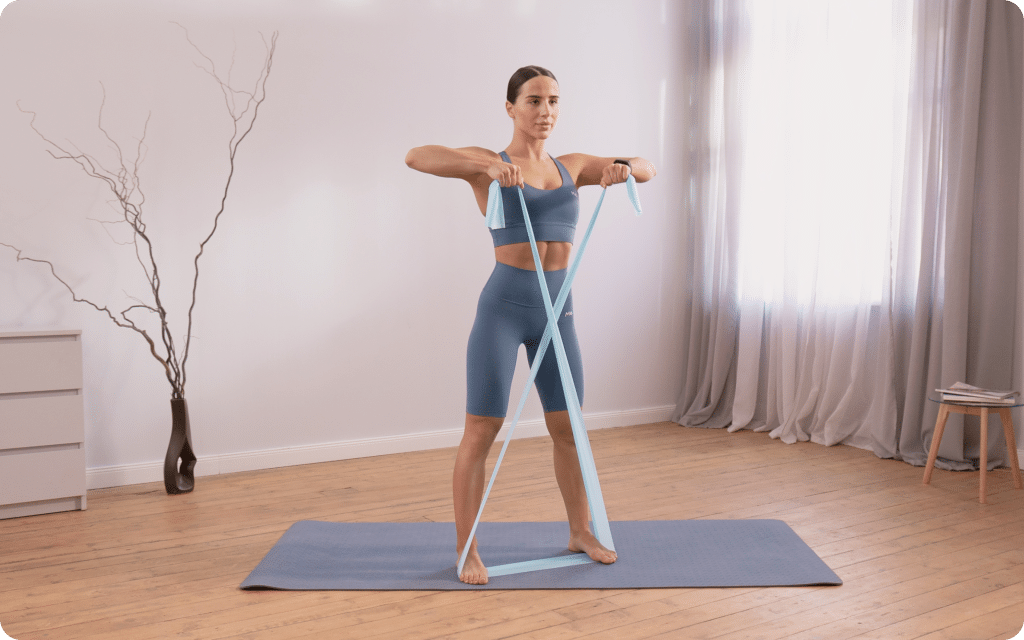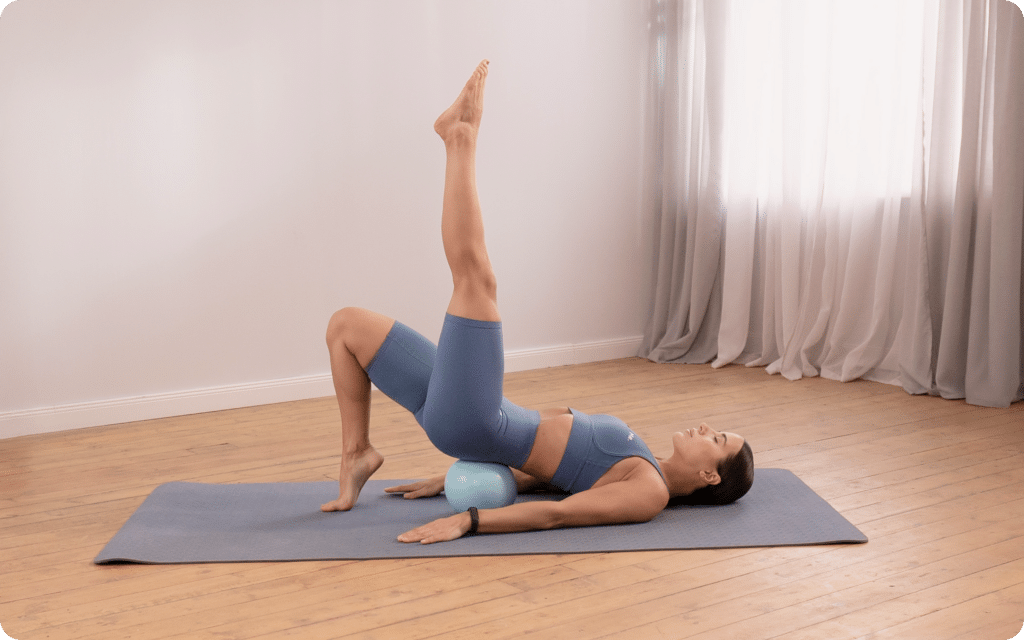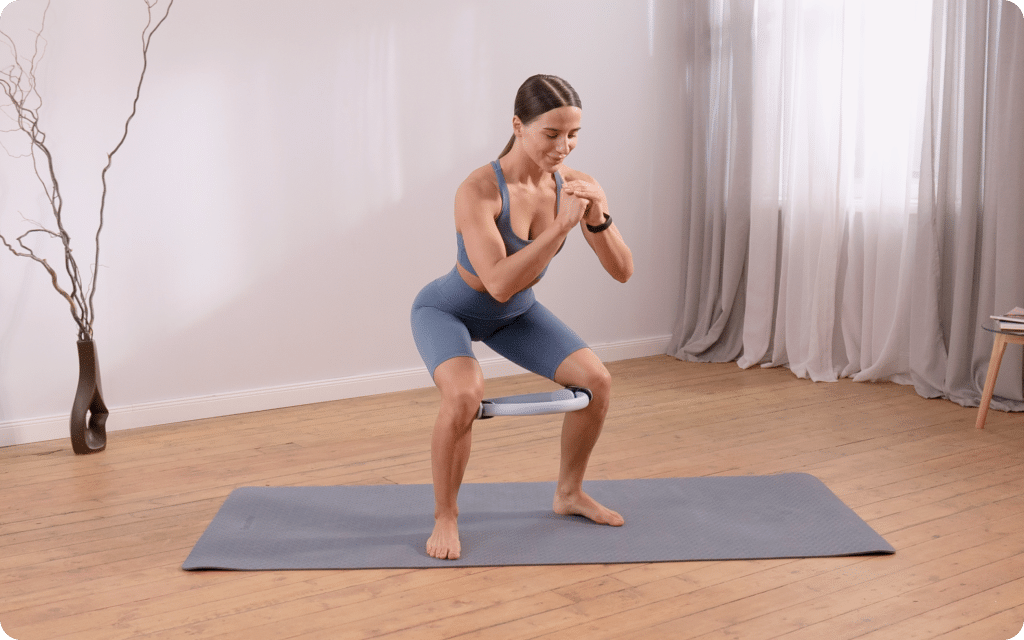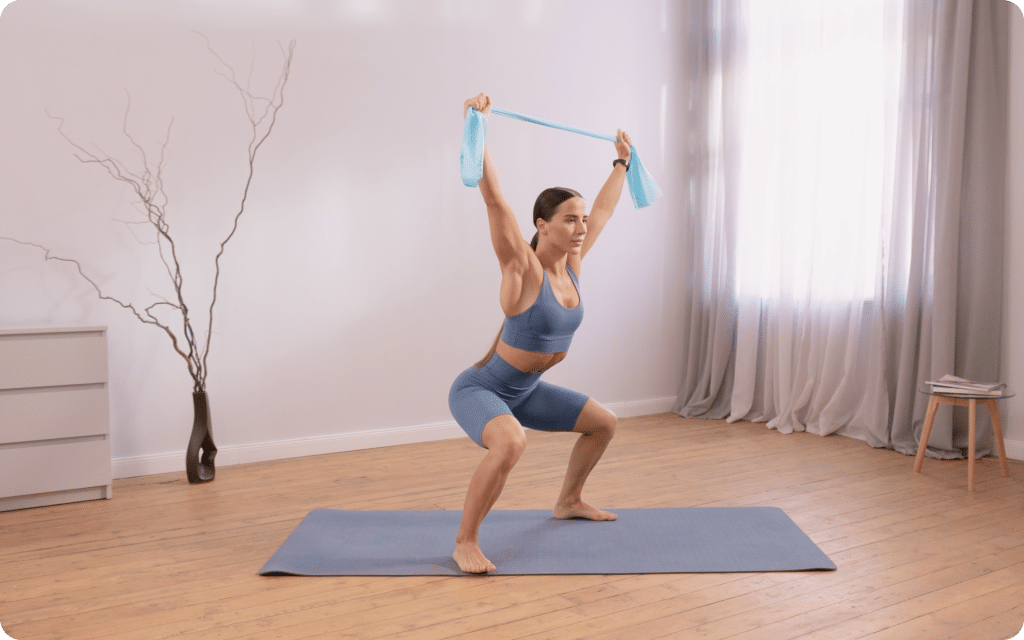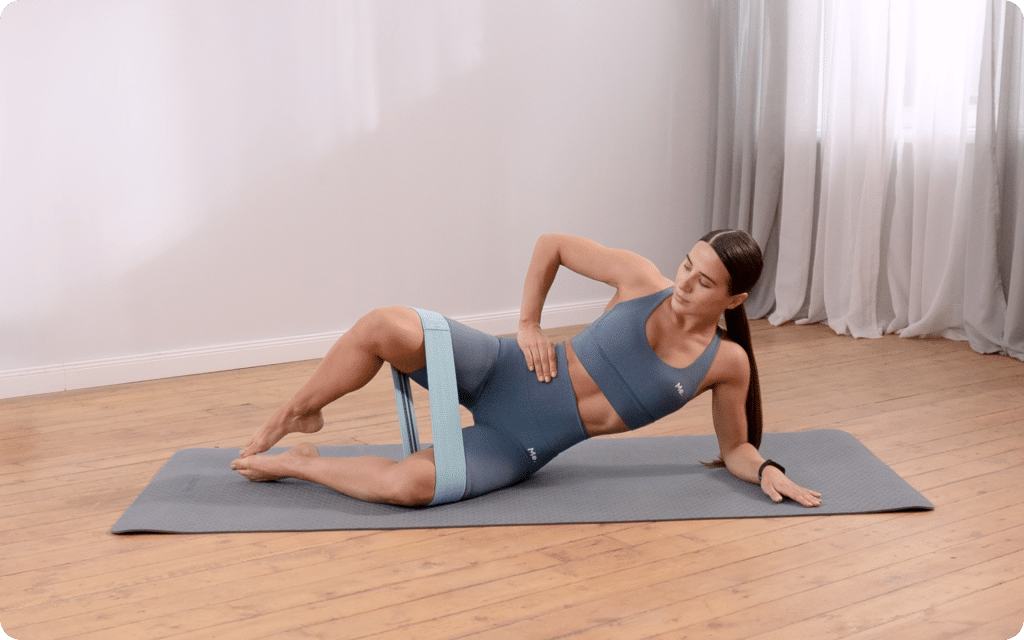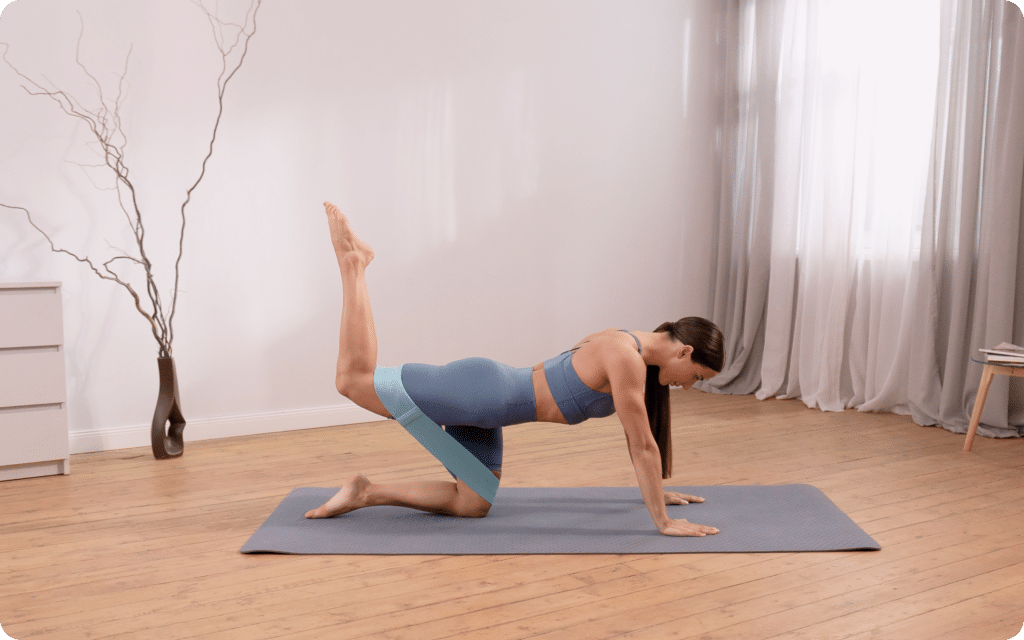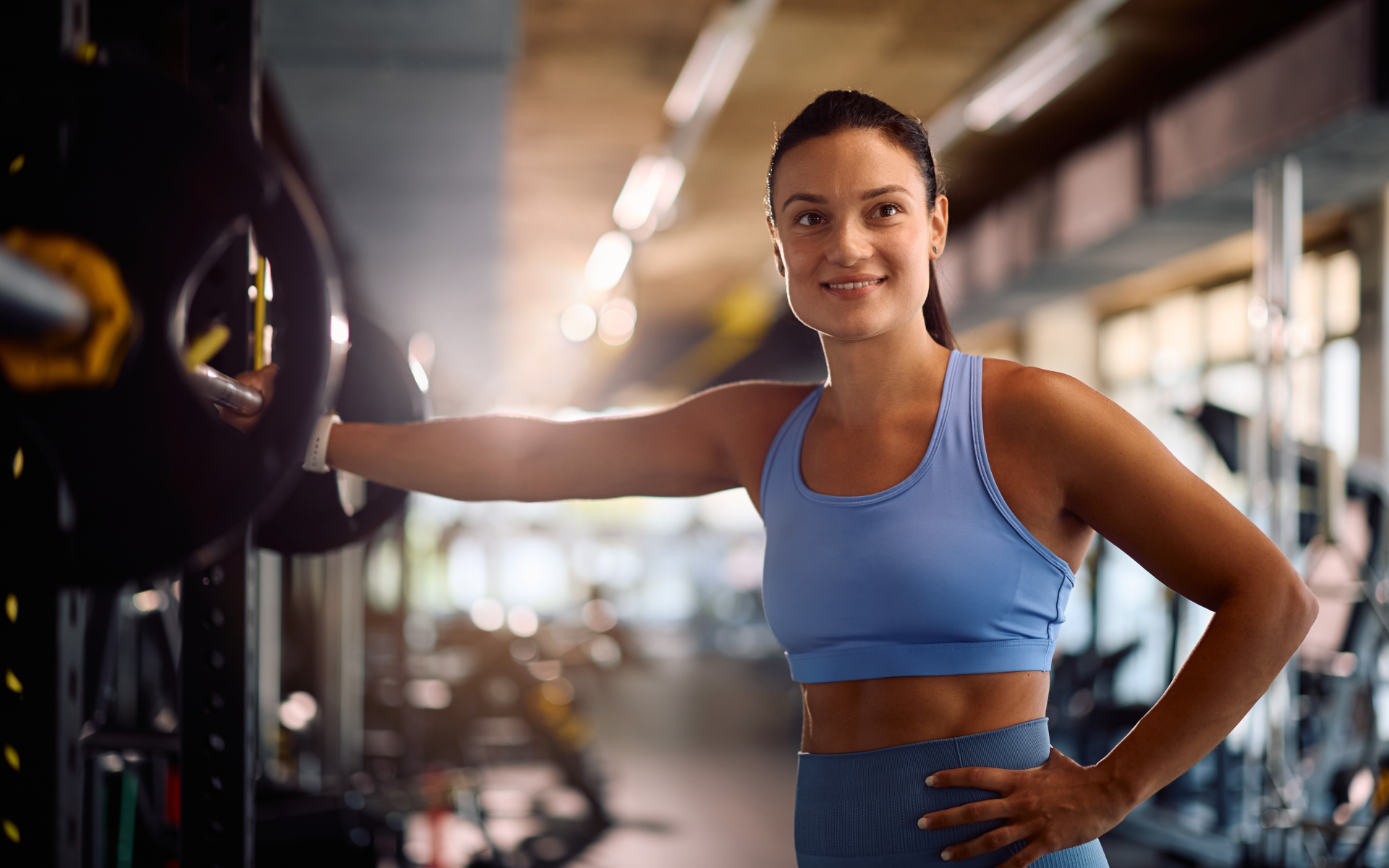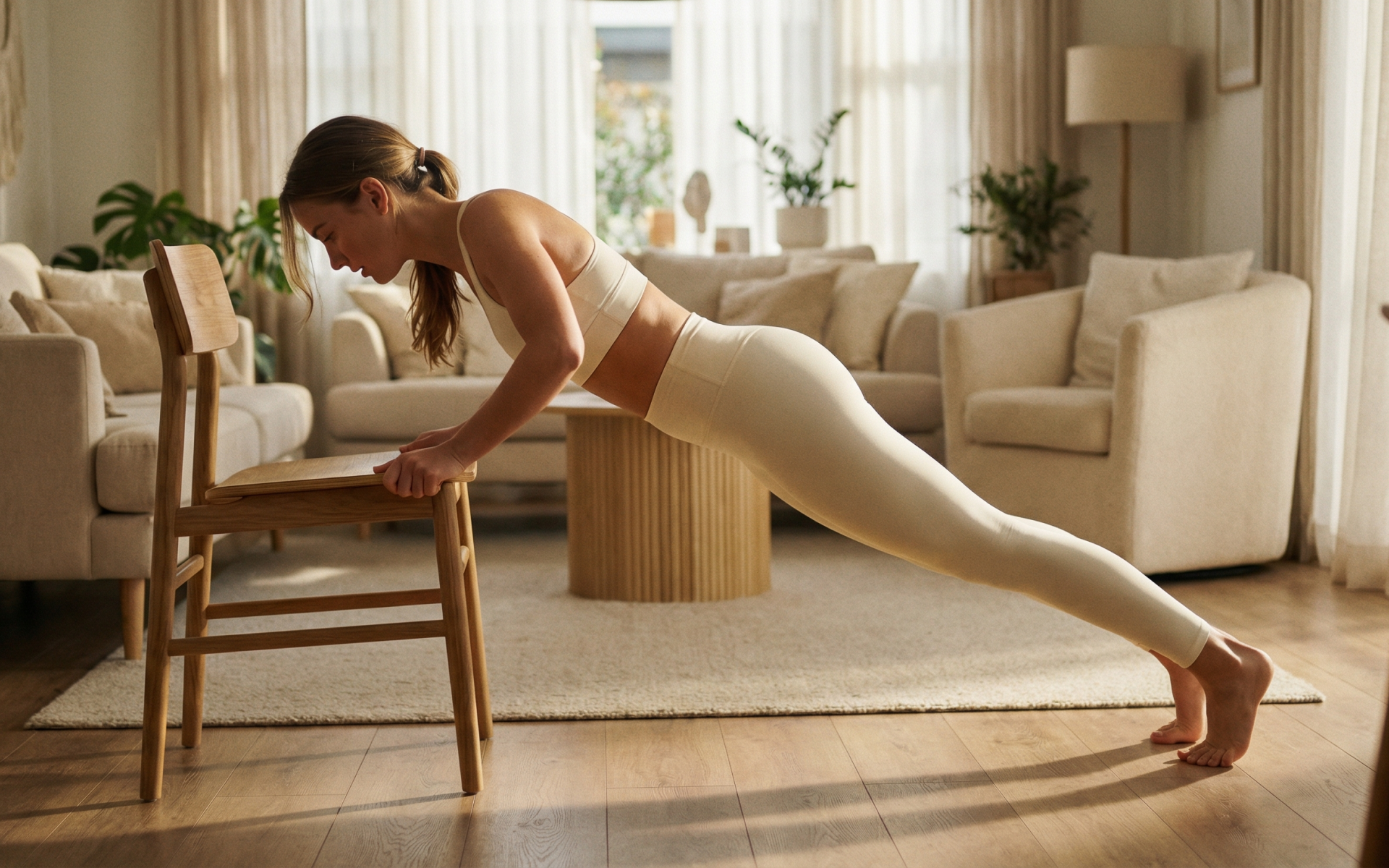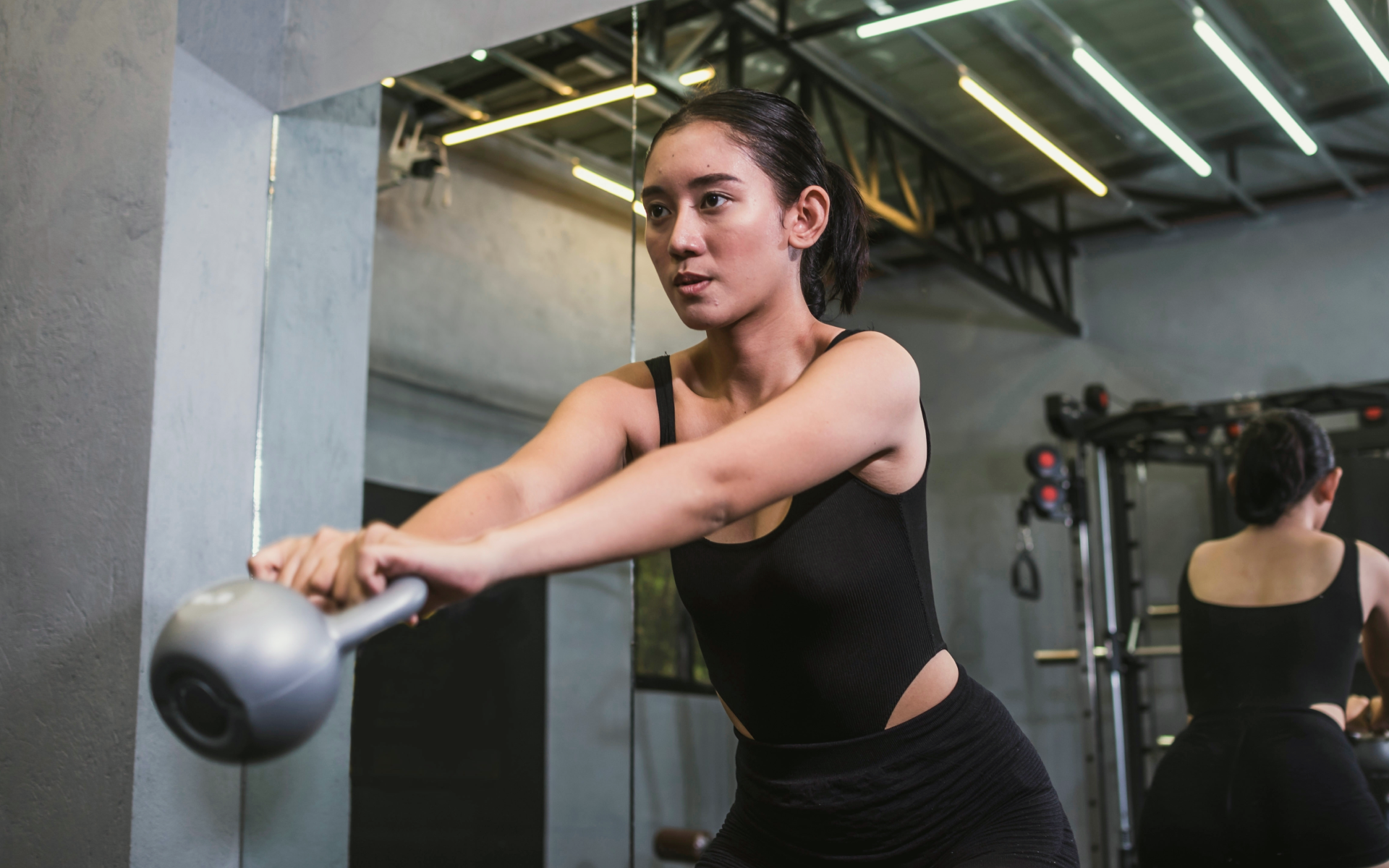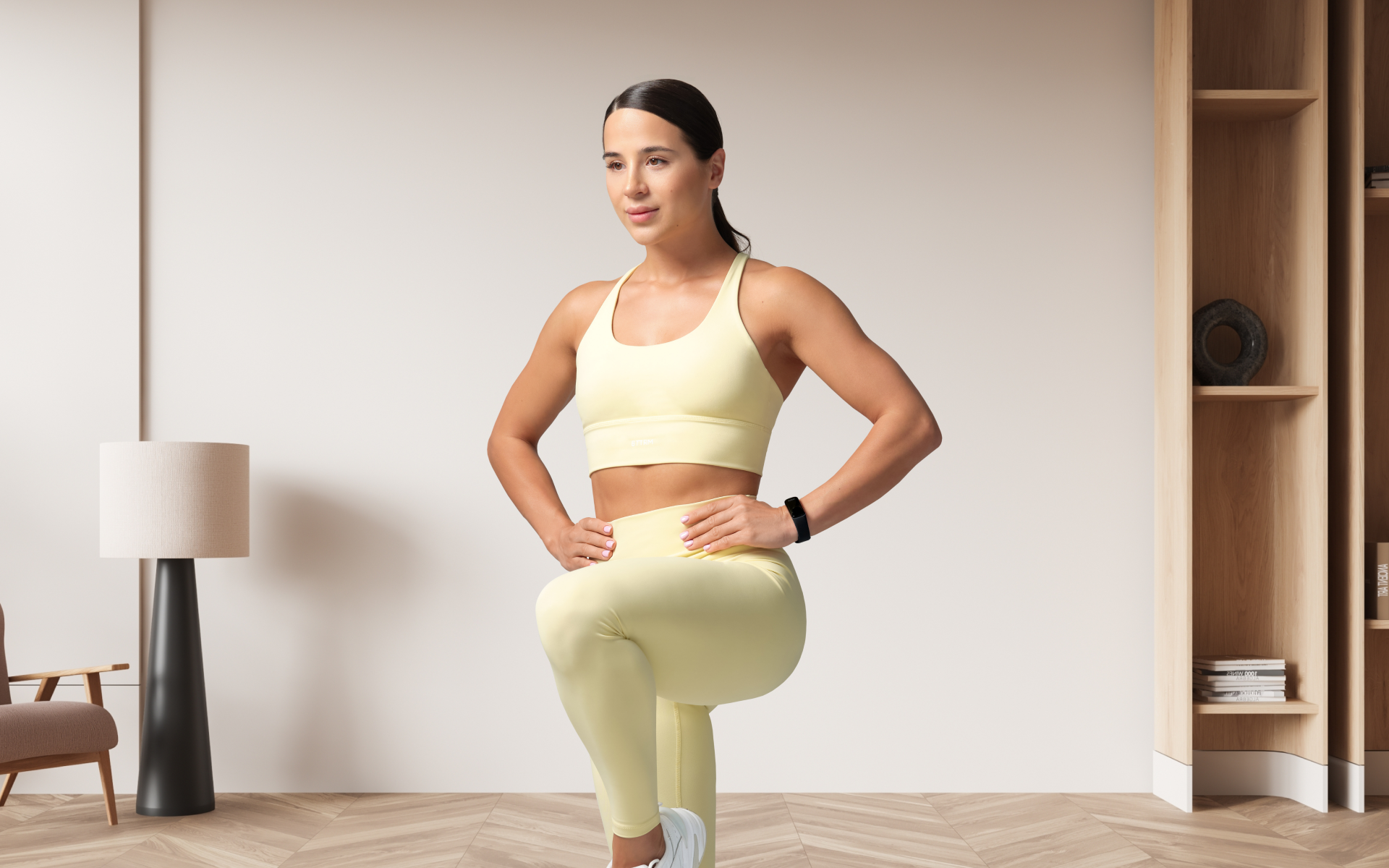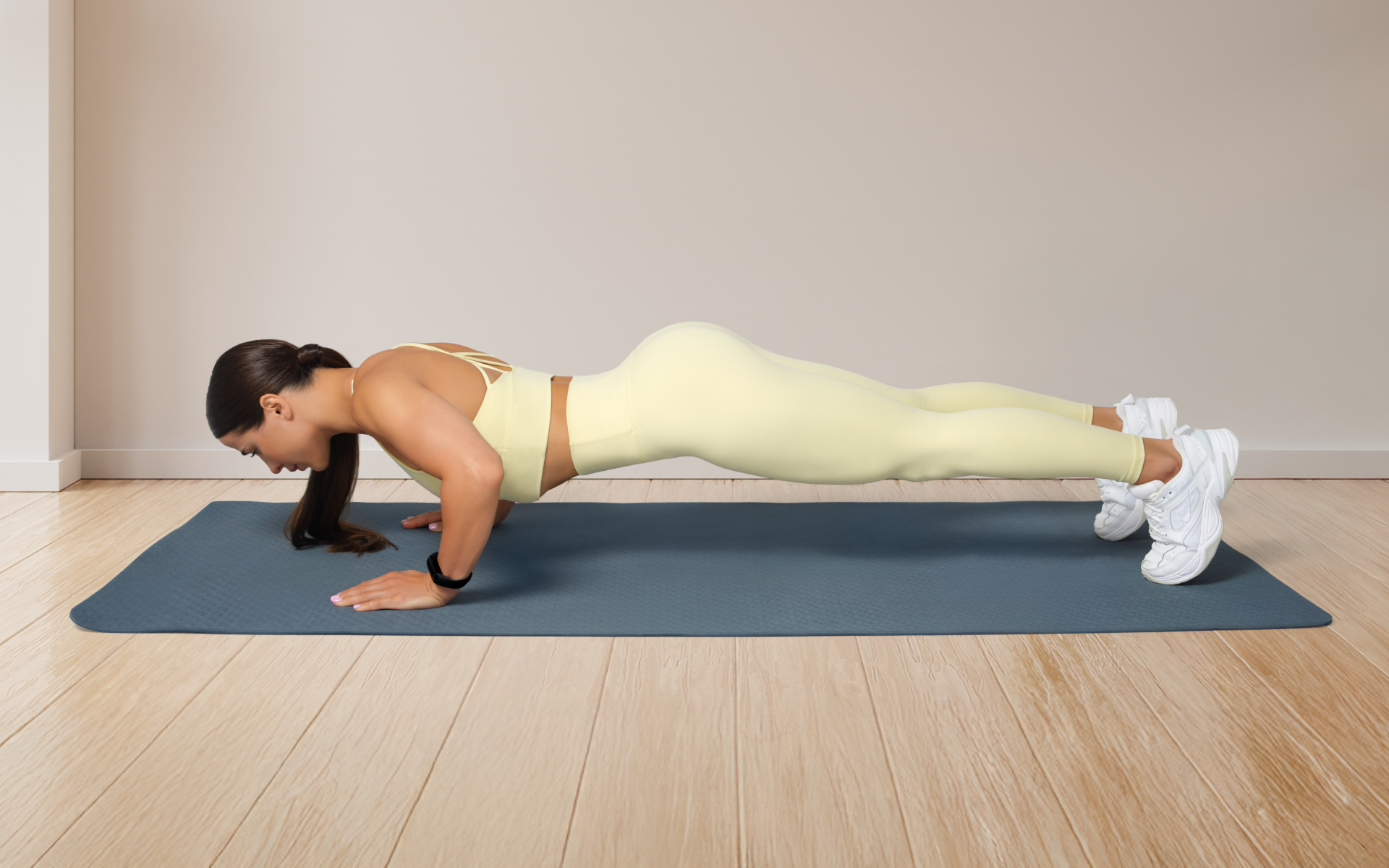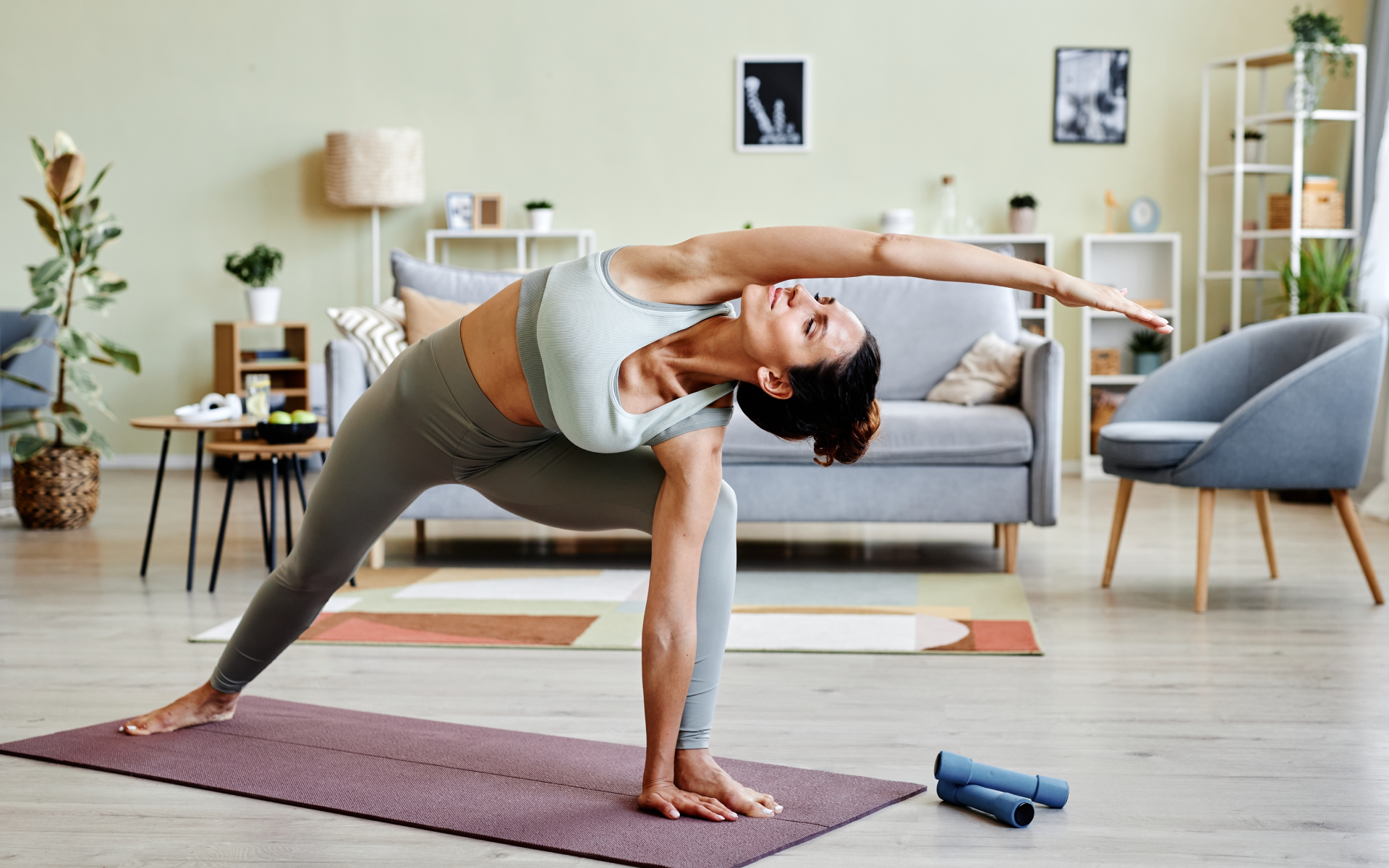Pilates and weight lifting may seem worlds apart, but they complement each other in fascinating ways. What happens when you combine Pilates and weight lifting?
Pilates focuses on:
- Flexibility
- Core stability
- Movement control through precise, low-impact exercises (1).
Weightlifting builds:
- Power
- Muscle strength
- Bone density with progressive overload (2).
Together, they create a balanced training approach that supports both function and aesthetics.
But how do you effectively integrate these two methods?
Combining them within the same training cycle requires thoughtful planning to maximize their strengths while avoiding overtraining or conflicting adaptations.
Here’s what there is to know about a Pilates and weight training schedule:
Is Pilates Good For Weight Lifters?
Pilates and weight lifting benefits involve core strength, stability, mobility, and neuromuscular control. By integrating Pilates, a low-impact exercise system, into a weight lifter’s routine, it’s possible to address weaknesses that traditional lifting may overlook.
Enhancing Core Stability For Better Performance
Weight lifting heavily relies on core stability to transfer force effectively between the upper and lower body. Exercises such as deadlifts or squats require significant core support to stabilize the spine and pelvis during movement (3).
Pilates prioritizes deep core activation, targeting muscles such as the transverse abdominis (a deep-layer abdominal muscle) and multifidus (a group of muscles critical for spinal stability) (4).
According to research, Pilates movements stabilize and increase the function of core muscles (5). For weight lifters, this improved core function can reduce spinal stress during heavy lifts and enhance overall movement efficiency.
If you wish to free yourself from all the extra pounds that have been weighing you down for way too long, start using the BetterMe: Health Coaching app and overhaul your entire life!
Balancing Muscle Activation
- Weightlifting tends to favor prime movers, such as the glutes, quads, and pecs, often leaving smaller stabilizing muscles underutilized.
This underutilization can create strength imbalances over time, potentially increasing the risk of injury (6).
- Pilates, by contrast, emphasizes controlled movements and the activation of stabilizer muscles (1). For example, exercises on the Pilates reformer (a specialized piece of equipment with spring-based resistance) focus on proper alignment and balanced muscle recruitment.
- For weightlifters, practicing Pilates ensures that you are adequately training both large muscle groups and stabilizers, such as the rotator cuff or deep hip muscles.
This balanced approach supports joint health and makes lifts more mechanically efficient.
Improving Flexibility And Range Of Motion
Weight lifting, while excellent at building strength, can sometimes lead to stiffness or tightness, especially if we neglect mobility work. Tight hip flexors from repetitive squats or reduced shoulder mobility from bench pressing are common concerns.
Pilates addresses these issues through dynamic stretching and controlled mobility exercises (7).
Movements like the spine stretch and saw help improve spinal flexibility, while hip-opening exercises enhance joint mobility and flexibility.
For lifters, maintaining or increasing the range of motion can directly translate to better form and greater power output in compound lifts.
Supporting Injury Prevention
Weight lifters often deal with repetitive stress injuries, particularly in the lower back, shoulders, and knees (8).
Pilates can help mitigate these risks by improving proprioception (the body’s awareness of its position in space) and teaching proper movement patterns.
Proprioception enhances coordination and balance, which are crucial for maintaining control under heavy loads (9).
Additionally, Pilates sessions often include breathing exercises that teach lifters how to engage their diaphragm effectively during movement. This engagement can improve intra-abdominal pressure control and spinal stability, reducing the likelihood of low-back injuries during heavy lifts (10).
The Role Of Active Recovery
While weight lifting demands intense, high-impact efforts, Pilates offers a restorative complement. Its low-impact nature and emphasis on controlled movement make it an excellent option for active recovery. For more details about pilates body vs weight lifting, take a look at our prior publication.
Light Pilates sessions can:
- Enhance circulation
- Alleviate muscle soreness
- Promote flexibility following challenging strength-training days.
Active recovery also helps manage overall fatigue (11). This fatigue management ensures you’re preparing your body for subsequent lifting sessions, particularly when following a structured periodization plan.
Read more: Pilates At Home: A 30 Day Challenge To Improve Your Mind And Body
Can I Do Pilates And Weight Lifting On The Same Day?
Combining Pilates and weight lifting on the same day can be effective if managed thoughtfully.
Here are a few cases where it can be a smart move:
When Doing Both On The Same Day May Work
1. Pilates As A Warm-Up
Starting with Pilates can prepare your body for weightlifting.
Pilates emphasizes core engagement and increased range of motion (1).
Exercises like planks or bridges activate stabilizing muscles, such as the transverse abdominis (a deep core muscle) and multifidus (a muscle that supports spinal stability).
These activations can prime your body for compound lifts, reducing the risk of injury and improving your form.
2. Pilates After Lifting For Recovery
Following a lifting session with a low-intensity Pilates session is another option.
After heavy lifting, tight muscles can benefit from Pilates’ mobility-focused exercises such as spinal stretches or leg circles. This approach can aid recovery by increasing blood flow, promoting flexibility, and counteracting post-lifting stiffness.
3. Combining Short Sessions
You can combine shorter Pilates and weightlifting sessions into a single workout.
For example, you can follow a quick lifting session targeting one or two muscle groups with a Pilates routine focusing on core stability or mobility.
Keeping both sessions moderate in intensity ensures you’re not overtaxing your body.
Why It Might Not Be Ideal
1. Fatigue And Performance Decline
Both Pilates and weight lifting require focus and energy.
If one session is highly intense, it could compromise performance in the other.
For example, attempting advanced Pilates movements after an exhausting weight-lifting session increases the risk of poor form and potential injury.
2. Conflicting Physical Demands
Weight lifting focuses on strength and power production through maximal effort.
Pilates, however, emphasizes control, precision, and neuromuscular coordination.
Performing both without adequate recovery in between could limit the quality of each session, especially if muscles are fatigued.
Should I Do Pilates Before Or After Weightlifting?
It’s best to do Pilates and weightlifting on separate days.
As we’ll discuss later in this article, separating the two allows your body to focus entirely on the distinct demands of each activity.
However, if your schedule or goals require combining them on the same day, the order you choose can significantly influence your performance and results.
Doing Pilates Before Weightlifting
Starting with Pilates can be a wise choice if your goal is to enhance core stability, neuromuscular activation, or mobility before engaging in weightlifting.
Pilates exercises, such as planks or pelvic tilts, focus on activating stabilizing muscles like the transverse abdominis (a deep core muscle) and the multifidus (critical for spinal support). This Pilates warm-up can prepare your body for complex, heavy lifts, such as deadlifts or overhead presses.
By improving body alignment and control early in your workout, Pilates can reduce the risk of poor form during weightlifting. For example, exercises that engage the glutes and hamstrings can improve hip stability, which is essential for performing squats and lunges effectively.
However, this order may not be ideal during high-intensity strength phases.
Pilates can lead to fatigue, particularly in the smaller stabilizer muscles.
This fatigue might compromise your technique during heavy lifts, where stabilization is critical for safety and success.
Doing Pilates After Weightlifting
Ending your Pilates session with strength and hypertrophy (muscle growth) as your primary goals is generally beneficial. Weightlifting demands maximal effort from your muscles and central nervous system (the control center for your movements and reflexes). By prioritizing lifting, you ensure that your energy and focus are at their peak when performing complex, demanding exercises.
Pilates can then serve as an active recovery component. After weightlifting, muscles often feel tight, particularly in areas such as the hips, shoulders, or lower back.
Low-intensity Pilates movements, such as spine stretches or leg circles, can improve flexibility and gently activate underused muscles without additional strain.
This order also reduces the risk of fatigue-induced performance issues.
For example, doing Pilates after lifting heavy weights could minimize the neuromuscular fatigue that might otherwise hinder precise, controlled movements.
How To Decide The Best Order
The choice ultimately depends on your goals and how you structure your workout:
- If mobility and control are a priority (e.g., improving form for squats or deadlifts), start with light, activation-focused Pilates.
- If strength and muscle growth are the primary goals (e.g., building a stronger bench press), lift first and then finish with mobility-focused Pilates to aid recovery.
Read more: Beginner Pilates Exercises: A Simple Guide To Get Started
How Do You Split Pilates And Weight Lifting?
A Pilates and weight lifting split can occur on different days to optimize recovery, reduce fatigue, and help you achieve the best results from both.
The key lies in structuring your routine so that Pilates and weightlifting complement each other without overlapping too much in terms of muscle demand or intensity.
Step 1: Identify Your Goals
Your primary goal will guide how you allocate effort to each activity.
For instance:
- If muscle strength and size are your primary priorities, focus on weightlifting.
- If flexibility, core control, and injury prevention are key, focus more on Pilates.
Step 2: Alternate High-Intensity Workouts
To avoid overtraining and maximize recovery, don’t schedule back-to-back high-intensity sessions.
Here’s an example of how to organize a weeklong Pilates and weight lifting routine:
- Day 1: Weight lifting (strength focus, e.g., legs and back)
- Day 2: Pilates (mobility and recovery-focused)
- Day 3: Weight lifting (upper body or hypertrophy focus)
- Day 4: Rest or light activity (e.g., a gentle walk)
- Day 5: Weight lifting (depending on rotation, e.g., full-body or compound lifts)
- Day 6: Pilates (core and dynamic stability work)
- Day 7: Rest or active recovery
Step 3: Match Pilates Focus To Recovery Needs
Adjust your Pilates sessions to complement your weight lifting.
For example:
- After leg-intensive exercises (e.g., squats or deadlifts), choose Pilates exercises that stretch the hamstrings and hip flexors while activating stabilizers, such as the glutes and core.
- Post-upper body lifting, focus on spinal mobility and movements that relieve shoulder tension, such as arm circles or chest expansions.
Step 4: Schedule Rest Strategically
Recovery is crucial. Plan at least one full weekly rest day to allow your central nervous system and muscles time to repair.
Rest days are essential for both strength gains and improved movement patterns (12).
Step 5: Listen To Your Body
While schedules are helpful, flexibility is essential. If you feel sore from a previous session, adjust the intensity of your Pilates or postpone a heavy lifting day.
Overtraining can hinder progress and increase the risk of injury.
Can Pilates Replace Weight Lifting?
Pilates and weight lifting are both effective forms of exercise, but they serve different purposes. While Pilates can complement certain aspects of weight lifting, it is not a direct replacement.
Pilates focuses on endurance and stabilizer muscles, while weight lifting targets larger, prime-mover muscles critical for strength and power. While Pilates engages the core and utilizes bodyweight for resistance, it lacks the progressive load necessary for building significant muscle mass or strength.
For instance, a Pilates exercise like a single-leg bridge activates the glutes, but it doesn’t match the intensity of weighted squats or lunges. Similarly, exercises like arm circles or shoulder reaches are excellent for mobility but can’t replace the strength-building qualities of lifting weights overhead.
So, while Pilates has many benefits and can complement a weight-lifting routine, it’s not designed to replace it. Each serves a unique purpose, and the two modalities work best when combined.
Why Would You Want To Switch From Weightlifting To Pilates?
Switching from weightlifting to Pilates isn’t about choosing one over the other, but about aligning your fitness routine with your current needs and goals.
Here are several scenarios where transitioning to Pilates could be a good choice.
- To Recover From An Injury Or Prevent One
Weightlifting involves heavy loads, which can strain muscles, joints, and connective tissues if not performed with perfect form or adequate recovery.
Pilates, on the other hand, emphasizes low-impact movements that promote alignment, balance, and joint stability.
For example, someone recovering from a lower back injury may benefit from Pilates exercises such as the pelvic curl or supine leg lifts. These movements strengthen the deep core muscles (e.g., the transverse abdominis) that support the spine without the compressive forces associated with lifting heavy weights.
Similarly, Pilates can act as a preventative measure, helping you identify and correct muscle imbalances that could lead to injuries during high-intensity strength training.
- To Improve Mobility And Flexibility
Unlike weightlifting, which can shorten muscles (think tight hamstrings from heavy deadlifts), Pilates emphasizes lengthening movements that enhance flexibility and improve range of motion. This stretching factor can be crucial for someone experiencing stiffness or restricted movement patterns after years of traditional strength training. Our previous article covers everything you need to know about pilates strength training.
For example, exercises like the spine stretch or saw in Pilates target spinal mobility, which can be especially valuable for individuals recovering from poor posture or desk-bound lifestyles.
These movements enhance overall functionality and can even complement future lifting by allowing for greater depth in squats or improved shoulder mobility during overhead presses.
BetterMe will shake off your mental funk, rid you of your energy-zapping habits, and help you sculpt the body of your dreams. Intrigued? Hurry up and change your life for the better!
- To Reduce Stress On Joints
Over time, heavy weightlifting can place substantial stress on joints, particularly the knees, shoulders, and hips. This stress might lead to wear-and-tear injuries or chronic discomfort, especially for individuals predisposed to joint issues or living with conditions like arthritis.
Pilates addresses this by focusing on controlled, fluid movements that are gentle on the joints but still effective for building strength. For example, Pilates exercises often utilize body weight or light equipment, such as resistance bands, to engage muscles without adding unnecessary joint strain.
- To Enhance Core Strength
While weightlifting builds total-body strength, it doesn’t always target the deep stabilizing muscles that Pilates excels at engaging.
Many Pilates exercises, such as the Hundred or the Roll-Up, focus on the transverse abdominis and pelvic floor muscles, which are crucial for maintaining stability and balance.
Strengthening these muscles can improve overall functional strength and posture, making it a sensible pivot for someone who feels their heavy lifting lacks core-specific focus.
- To Prioritize Recovery And Stress Reduction
The physical and mental demands of weightlifting can be grueling, particularly for athletes or individuals undergoing intense training cycles. Pilates offers a more restorative approach, helping the body and mind recover.
Controlled breathing, a fundamental component of Pilates, activates the parasympathetic nervous system and helps reduce stress.
This relaxation makes Pilates beneficial for anyone experiencing burnout, chronic fatigue, or elevated stress levels from the demands of heavy lifting.
- To Support Aging Or Changing Bodies
As we age, maintaining muscle mass becomes increasingly essential, while joint health, balance, and mobility take on greater priority. Pilates is well-suited to these needs because it focuses on functional movements and low-intensity strength building.
For older adults or individuals experiencing age-related changes, such as declining bone density or slower recovery, Pilates offers a safer and more adaptable alternative to heavy lifting.
Additionally, the emphasis on controlled movements in Pilates reduces the risk of injuries that may occur with high-intensity workouts in later years.
- To Bridge The Gap After A Fitness Hiatus
If you’ve taken a break from exercise and jumping back into weightlifting feels too daunting or risky, Pilates can be a gentle reintroduction. Its focus on core strength, mobility, and stability lays the groundwork for future gains when transitioning back to strength training.
For example, someone returning to fitness after surgery or pregnancy may find Pilates particularly beneficial since it offers a gradual path to rebuild foundational strength.
Does Pilates build muscle? It can build muscle strength and endurance, especially in stabilizing and postural muscles. However, Pilates doesn’t create hypertrophy (muscle growth) like weightlifting. Weightlifting utilizes progressively heavier loads to create the stimulus necessary for muscle mass gains, which Pilates typically doesn’t involve. Yes, Pilates can change your physique. It improves muscle tone, posture, and core strength, resulting in a leaner and more balanced appearance. While it won’t add significant muscle bulk, it helps sculpt a more defined and aligned body by focusing on deep-stabilizing muscles and improving flexibility. For beginners or those looking to supplement other workouts, 20 minutes of Pilates a day can be effective. It’s enough to engage your core, improve mobility, and work on stability. However, a more extended session may be more beneficial if you’re aiming for significant improvements in strength or flexibility. Most experts recommend lifting weights 2-4 days a week, depending on your fitness level and goals. For muscle building or Pilates strength training, aim for at least 3 sessions per week, with rest days in between to allow for recovery. Beginners may start with twice a week and gradually increase frequency.Frequently Asked Questions
Can I gain muscle weight with Pilates?
Does Pilates change your physique?
Is 20 minutes of Pilates a day enough?
How many days a week should you lift weights?
The Bottom Line
Alternating Pilates and weightlifting throughout your week promotes well-rounded fitness. Weightlifting builds strength and power, while Pilates focuses on supporting stability, mobility, and recovery. With proper structure, you can achieve balance, avoid burnout, and meet your fitness goals.
DISCLAIMER:
This article is intended for general informational purposes only and does not serve to address individual circumstances. It is not a substitute for professional advice or help and should not be relied on for making any kind of decision-making. Any action taken as a direct or indirect result of the information in this article is entirely at your own risk and is your sole responsibility.
BetterMe, its content staff, and its medical advisors accept no responsibility for inaccuracies, errors, misstatements, inconsistencies, or omissions and specifically disclaim any liability, loss or risk, personal, professional or otherwise, which may be incurred as a consequence, directly or indirectly, of the use and/or application of any content.
You should always seek the advice of your physician or other qualified health provider with any questions you may have regarding a medical condition or your specific situation. Never disregard professional medical advice or delay seeking it because of BetterMe content. If you suspect or think you may have a medical emergency, call your doctor.
SOURCES:
- Pilates: how does it work and who needs it? (2011, ncbi.nlm.nih.gov)
- Strength training: Get stronger, leaner, healthier (2023, mayoclinic.org)
- Core Muscle Activity during Physical Fitness Exercises: A Systematic Review (2020, ncbi.nlm.nih.gov)
- Transversus Abdominis Ultrasound Thickness during Popular Trunk–Pilates Exercises in Young and Middle-Aged Women (2023, ncbi.nlm.nih.gov)
- Effects of Core Stability Training on Deep Stabilizing Muscle Function and Neuromuscular Control (2025, ncbi.nlm.nih.gov)
- Comparison of Weightlifting, Traditional Resistance Training and Plyometrics on Strength, Power and Speed: A Systematic Review with Meta-Analysis (2022, ncbi.nlm.nih.gov)
- Effects of Pilates Training on Lumbo-Pelvic Stability and Flexibility (2011, ncbi.nlm.nih.gov)
- Prevalence and Pattern of Injuries Across the Weight-Training Sports (2023, ncbi.nlm.nih.gov)
- Effects of proprioceptive training on sports performance: a systematic review (2024, biomedcentral.com)
- The effects of Pilates breathing training on trunk muscle activation in healthy female subjects: a prospective study (2017 ncbi.nlm.nih.gov)
- Active Recovery: Reduce Fatigue and Enhance Performance (2020, issaonline.com)
- Why Rest Days Are Important for Muscle Building (n.d., blog.nasm.org)
